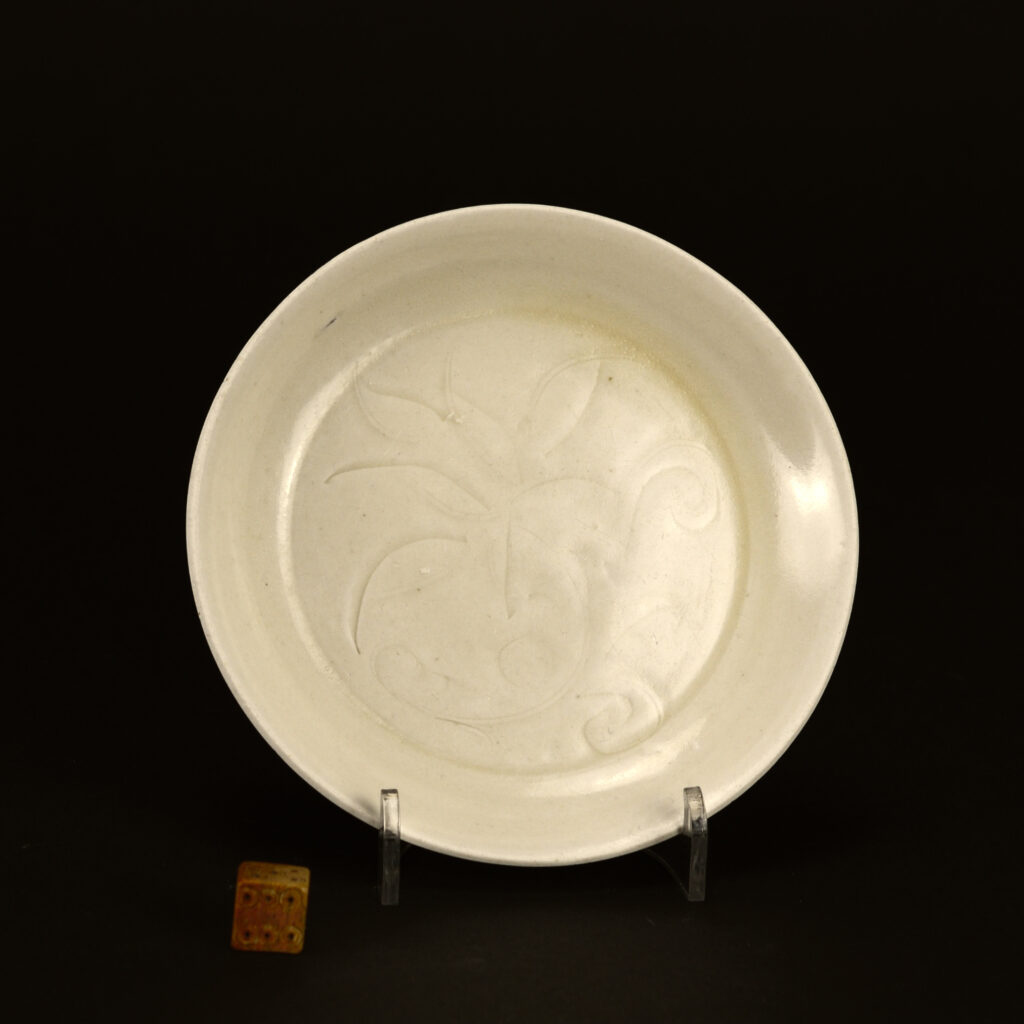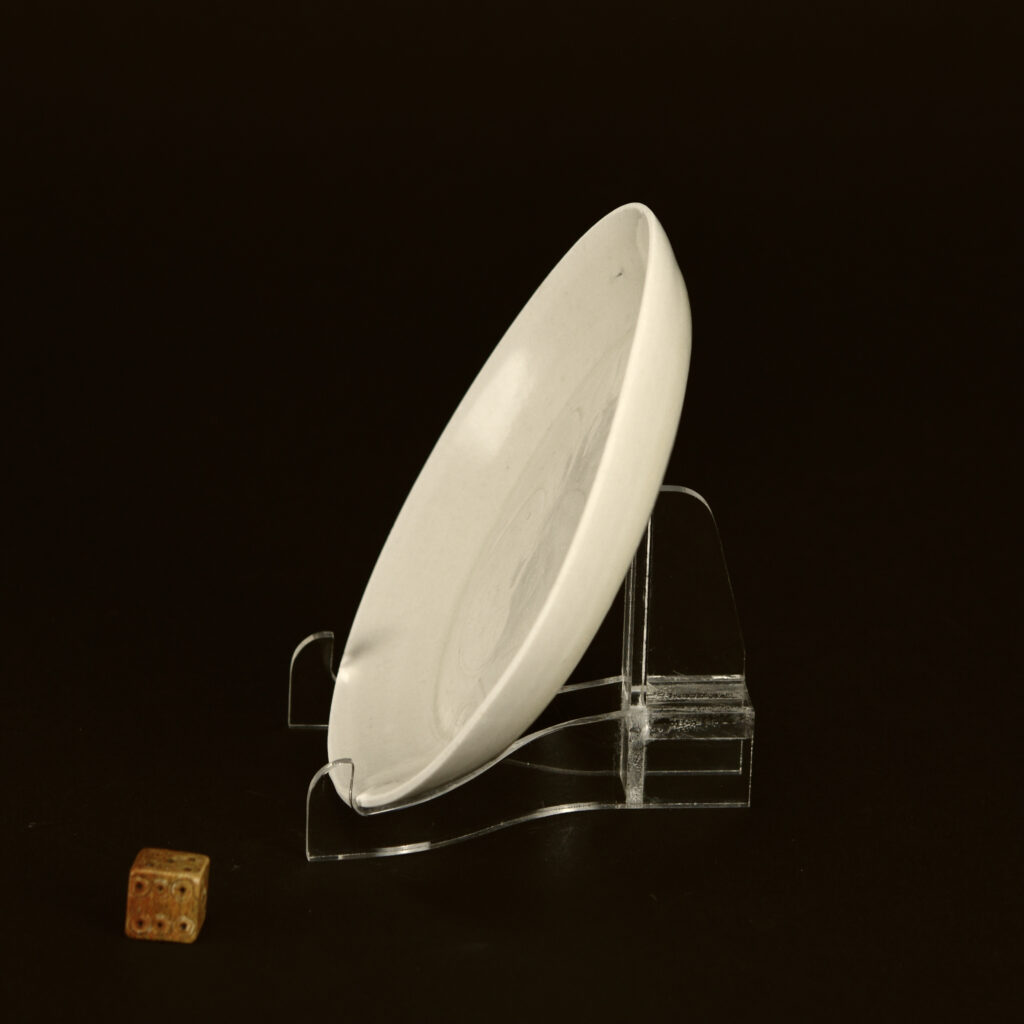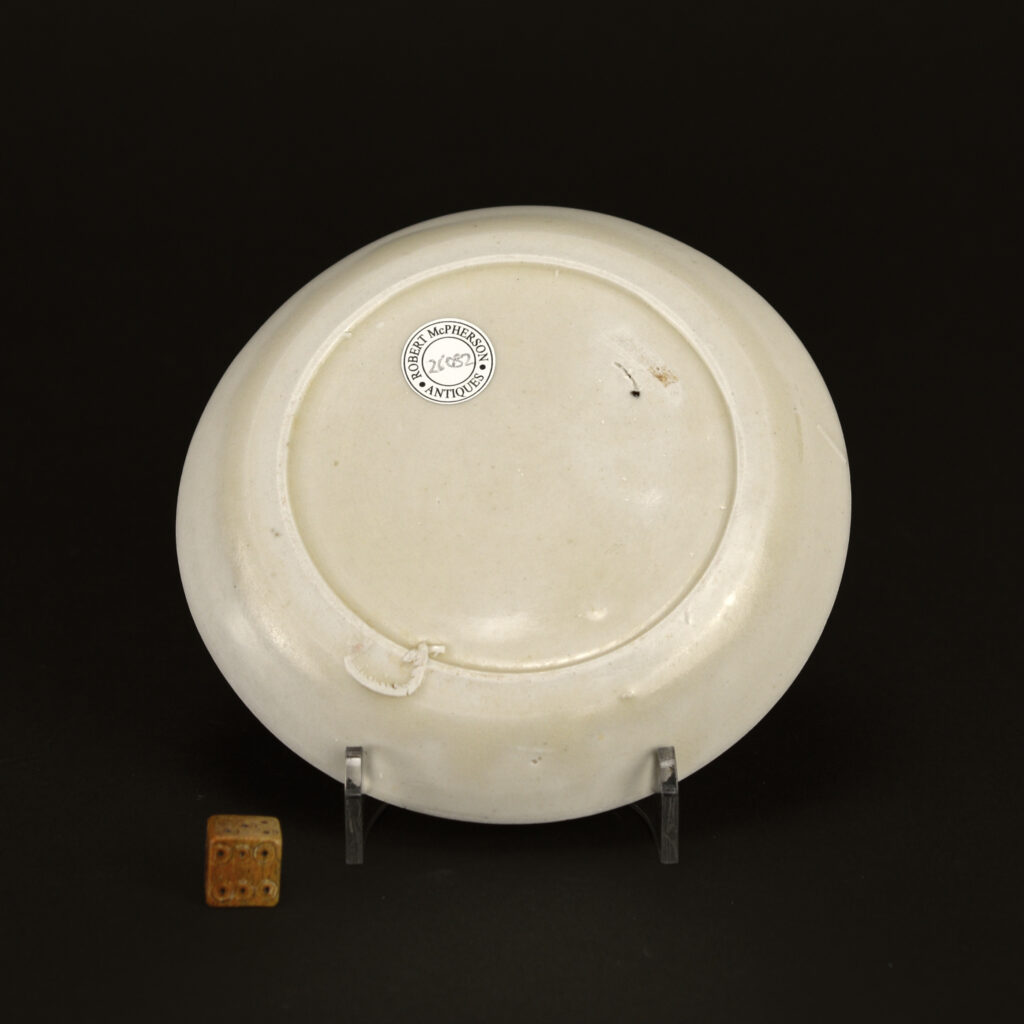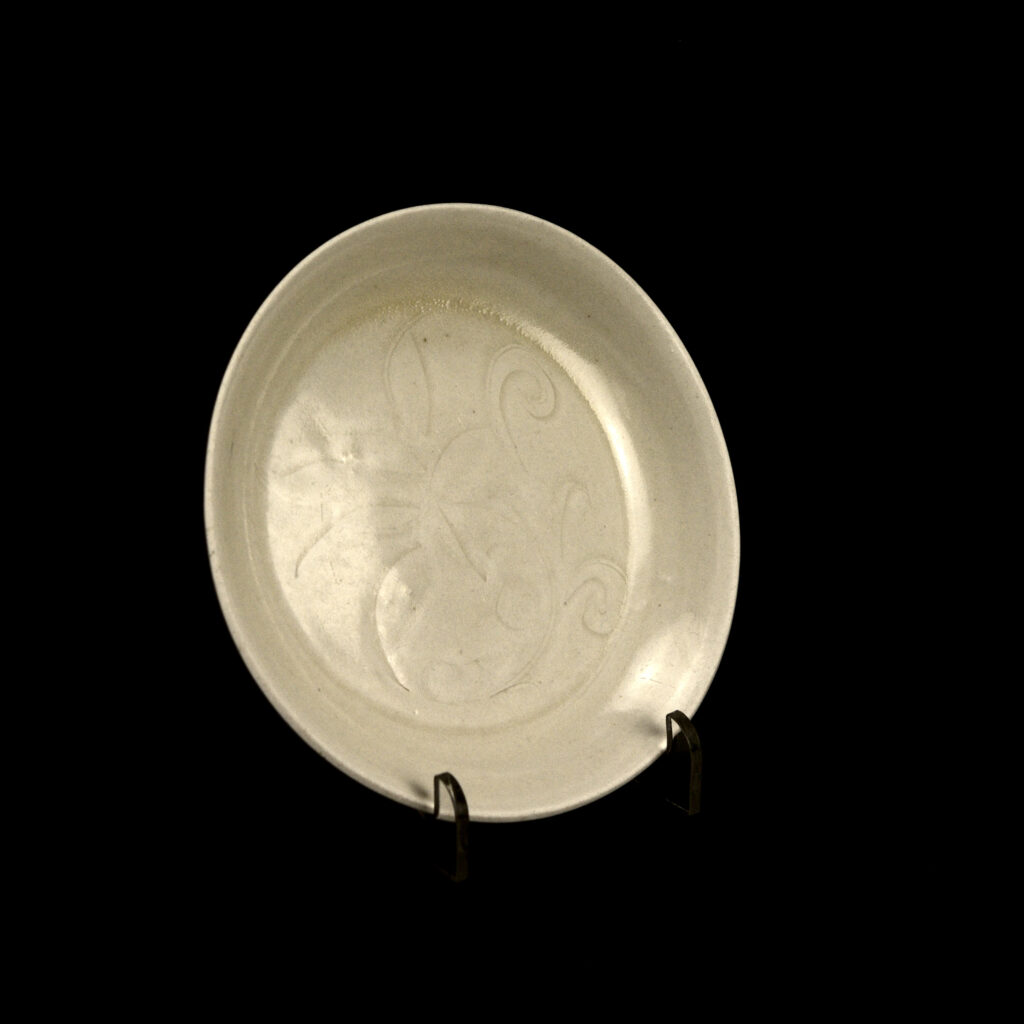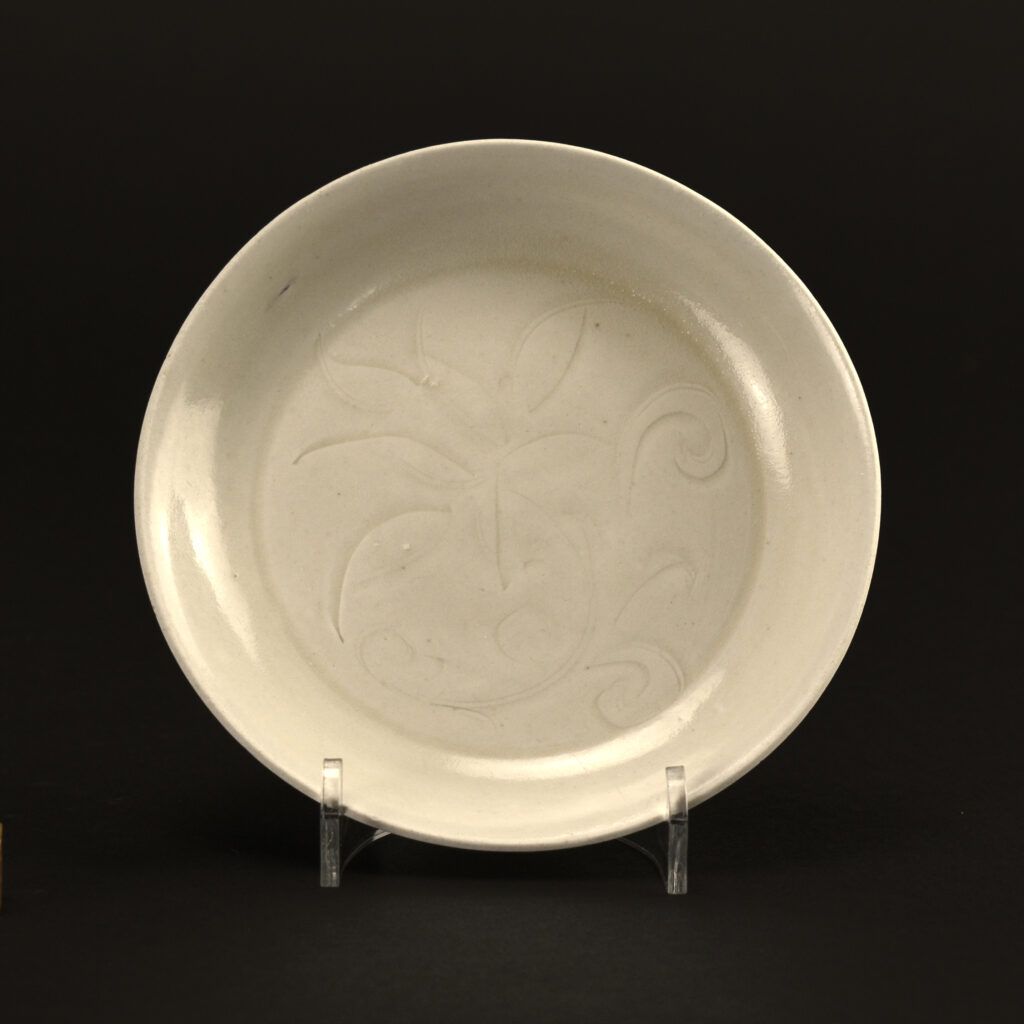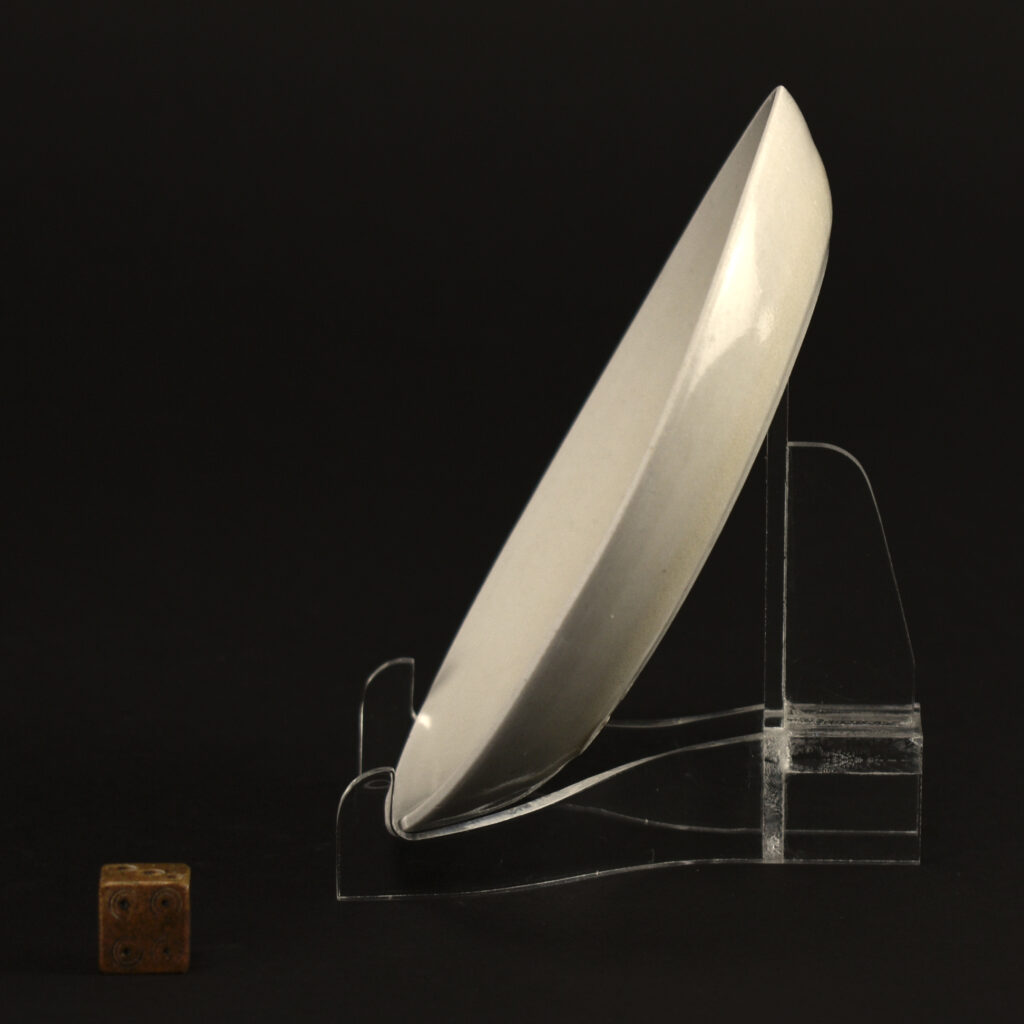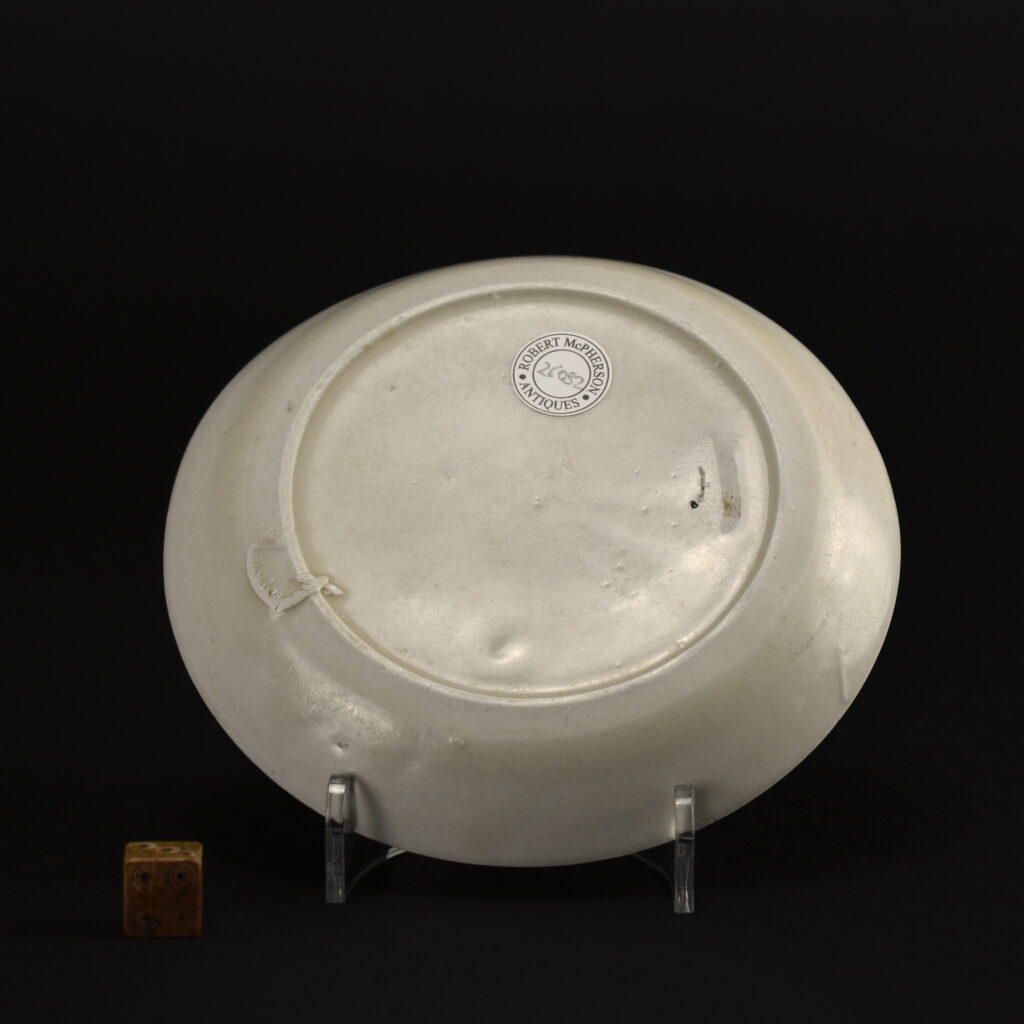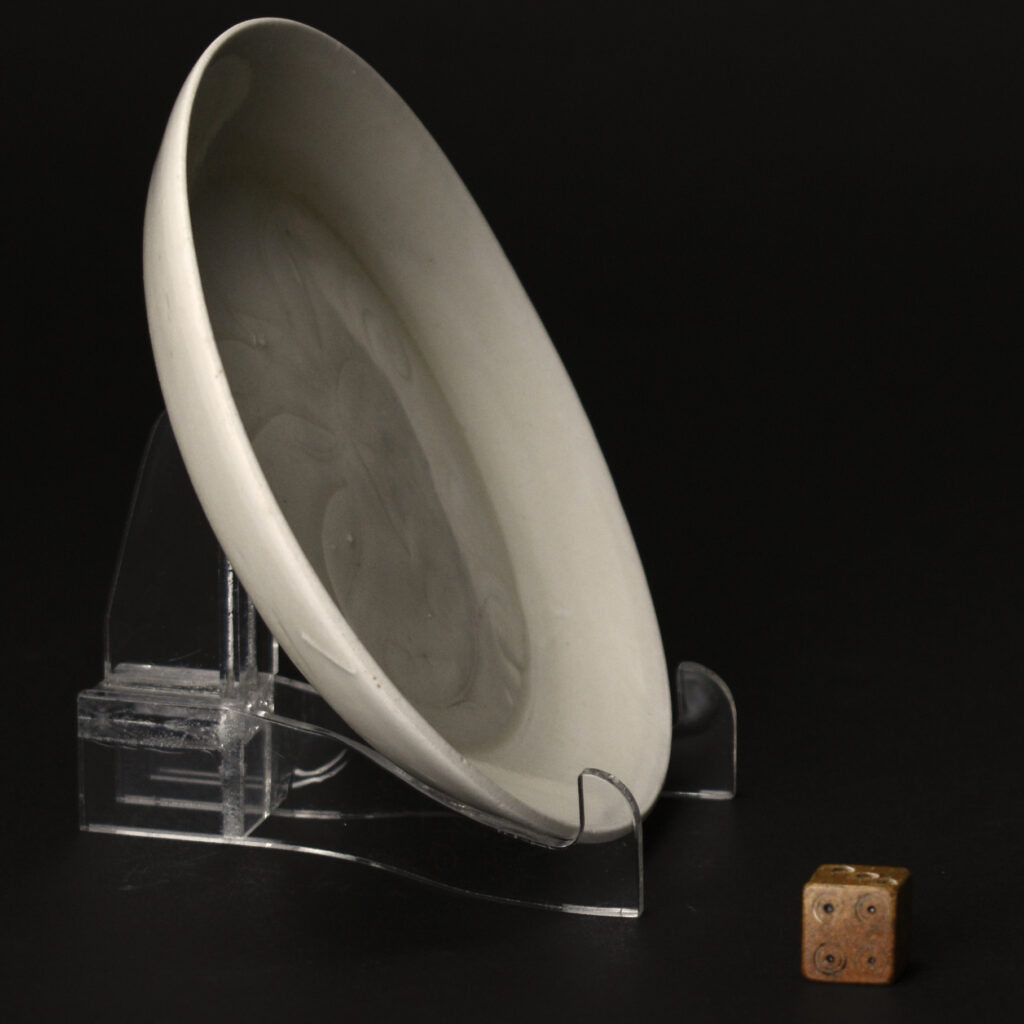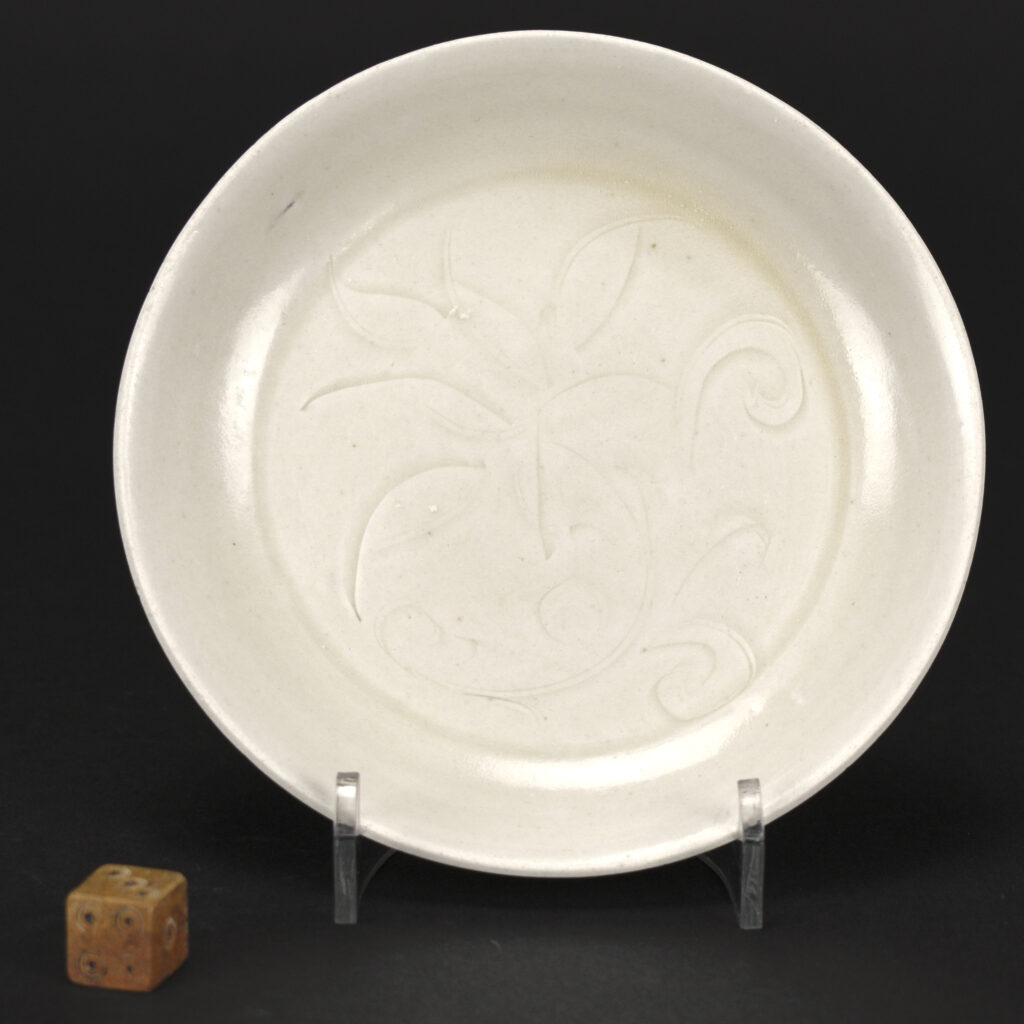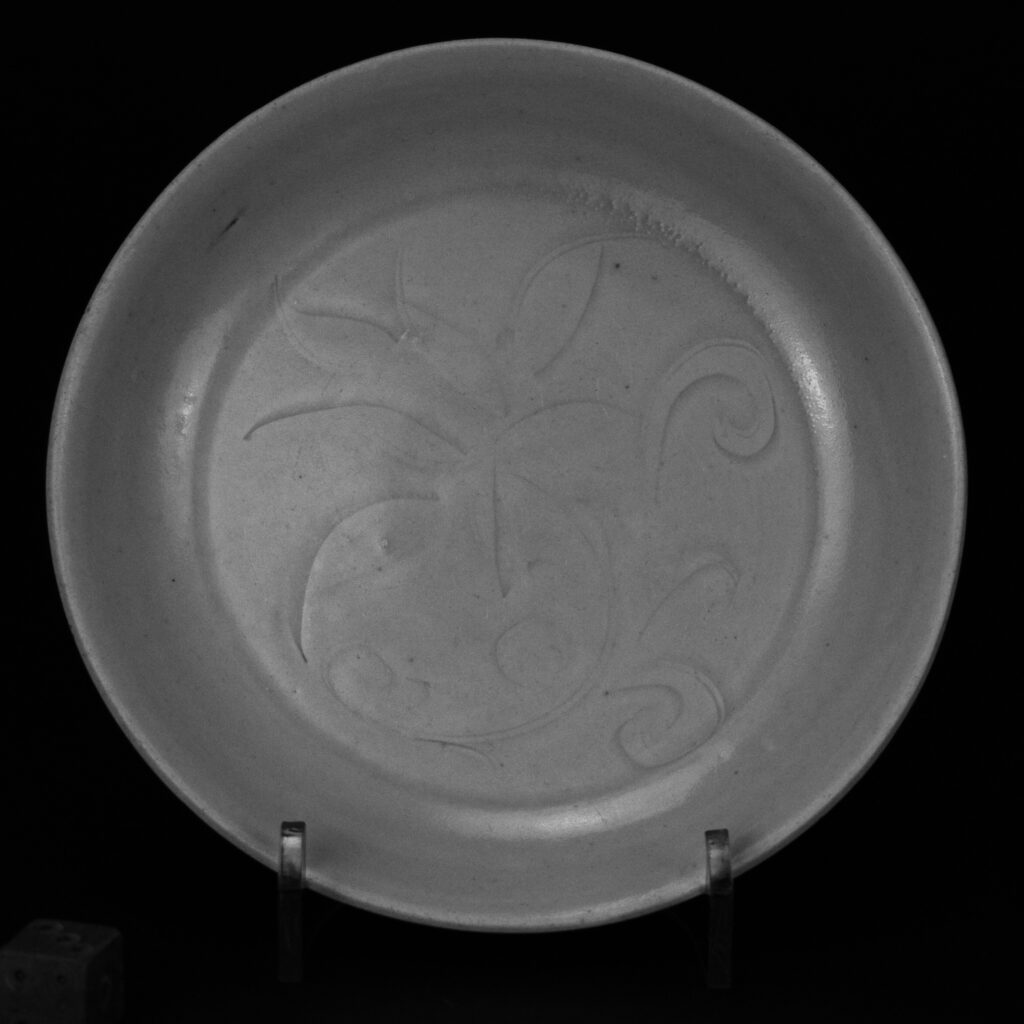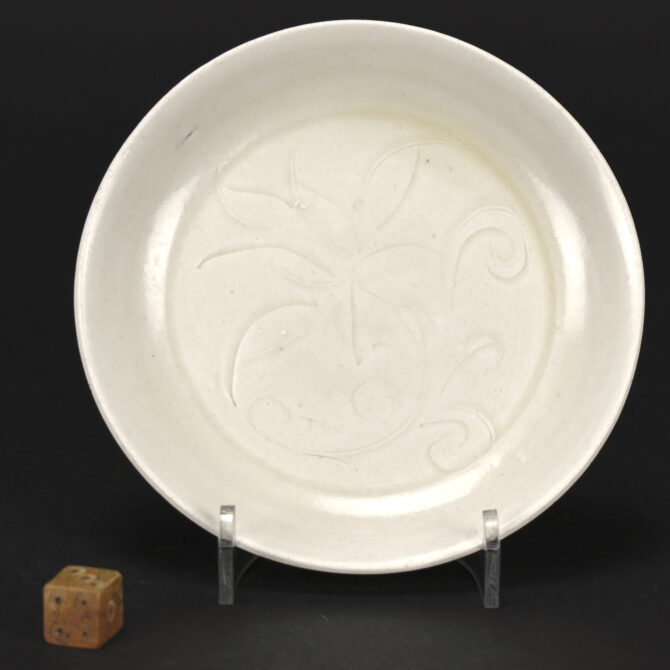
Northern Song or Jin Dingyao Dish 11th or 12th Century
A Small Ding Ware Dish, Ding Kilns in Hebei Province, Northern Song or Jin 11th or c.12th Century. The lightly potted shallow dish sits on a shallow foot with a recessed base. The center is carved with flowering lotus, the dish has a warm ivory tone typical of Dingyao. Krahl mentions a similar Dingware dish from the tomb whose owner died between 1153 and 1160, see References. Production of Ding ware began late in the Tang dynasty in Quyang county, Hebei province and was closely associated with Xing ware. During the Five Dynasties (906-960) Ding ware developed into its own distinct style and by the Northern Song dynasty the Ding kilns were producing some of the most successful porcelains in China. Ding ware is characterised by its ivory coloured body, clear honey coloured glaze, copper bound rim, and “tear drops” which run down the outside of its wares. Decoration of Northern Song Ding ware was typified by elegant hand carved and incised designs with combed detailing; this contrasts with Southern Song Ding ware which tended to display densely moulded motifs. Due to Ding’s popularity many kilns produced their own version of the wares which are termed Ding-type wares; however, these wares differ in refinement of body and craftsmanship to those produced at the Ding kilns.
SALE PENDING
- Condition
- In excellent condition, a few very tiny chips to the unglazed rim.
- Size
- Diameter 12 cm (4 1/2 inches).
- Provenance
- An Private English Collection.
- Stock number
- 26082
- References
- For a very similar Ding dish see : Chinese Ceramics from the Meiyintang Collection, Volume One (Regina Krahl, Azimuth Editions 1994. ISBN 1-8985592-02-0) page 204, item 358.
Information
Ding Ware :
Production of Ding ware began late in the Tang dynasty in Quyang county, Hebei province and was closely associated with Xing ware. During the Five Dynasties (906-960) Ding ware developed into its own distinct style and by the Northern Song dynasty the Ding kilns were producing some of the most successful porcelains in China. Ding ware is characterized by its ivory coloured body, clear honey-brown glaze, copper bound rim, and “tear drops” which run down the outside of its wares. Decoration of Northern Song Ding ware was typified by elegant hand carved and incised designs with combed detailing; this contrasts with Southern Song Ding ware which tended to display densely moulded motifs. Due to Ding’s popularity many kilns produced their own version of the wares which are termed Ding-type wares; however, these wares differ in refinement of body and craftsmanship to those produced at the Ding kilns.

